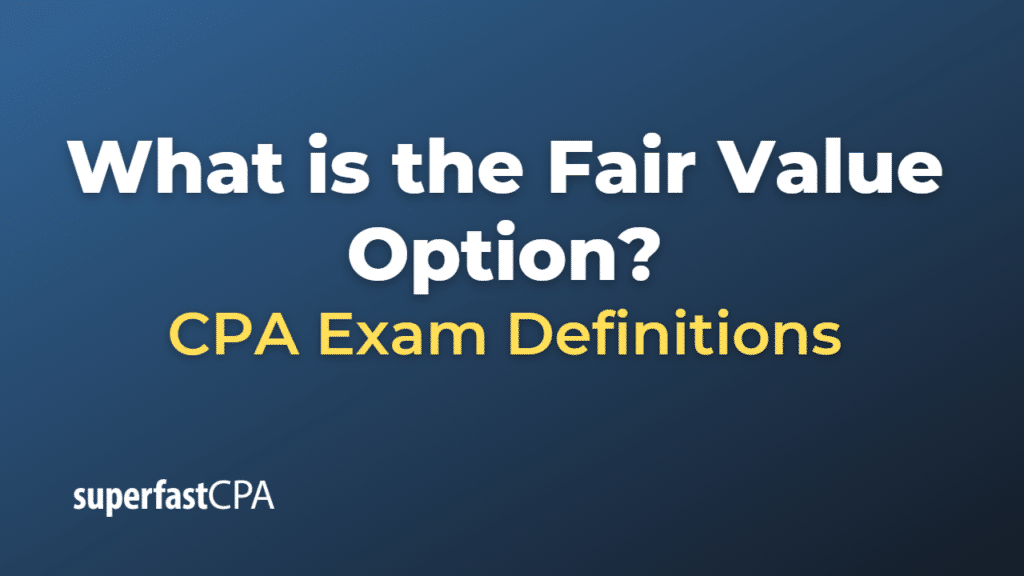Fair Value Option
The Fair Value Option is an accounting choice that companies can use for their financial instruments. It refers to a business’s ability to value its assets and liabilities at their current market values rather than at historical cost or using another valuation method.
The Fair Value Option was introduced in the United States by the Financial Accounting Standards Board (FASB) under Statement No. 159. This rule allows companies to voluntarily choose to measure eligible financial assets and liabilities at fair value.
The fair value option can only be applied instrument by instrument, with a few exceptions, at initial recognition and is irrevocable. Once a company decides to use fair value for a particular instrument, it cannot revert to the previous method of accounting for that instrument.
If a company chooses the fair value option, changes in fair value between reporting periods are recognized in earnings for the period. This can add volatility to reported earnings.
The Fair Value Option can be beneficial because it allows companies to reflect current market conditions in their financial statements. However, it also has drawbacks, including the potential for increased volatility in reported earnings and the fact that it may not reflect the way the business is managed if assets are not intended to be sold or liabilities settled at their fair value.
Example of the Fair Value Option
Let’s consider a company named Alpha Corp. that purchases a bond for $1,000. The bond pays an annual interest rate of 5% and has a maturity of 10 years.
In traditional accounting, Alpha Corp. would record the bond on its balance sheet at the historical cost of $1,000 (ignoring any premium or discount and associated amortization for simplicity). Each year, it would receive $50 in interest income, which it would report on its income statement.
Now, let’s say the market interest rates increase to 6% after Alpha Corp. purchased the bond. The fair value or market value of the bond would decrease because new investors would demand a higher return for the same risk level. For simplicity, let’s say the bond’s market value decreases to $950.
If Alpha Corp. has elected the Fair Value Option for this bond, it would then adjust the value of the bond on its balance sheet from $1,000 to $950, reflecting the bond’s current fair value. It would recognize a loss of $50 on its income statement due to the decrease in the bond’s value.
Remember that the use of the Fair Value Option can introduce more volatility to the income statement because of these adjustments in response to changes in market conditions. It’s also important to note that in reality, the calculation of fair value can be much more complex and depends on several factors, not just changes in interest rates.













